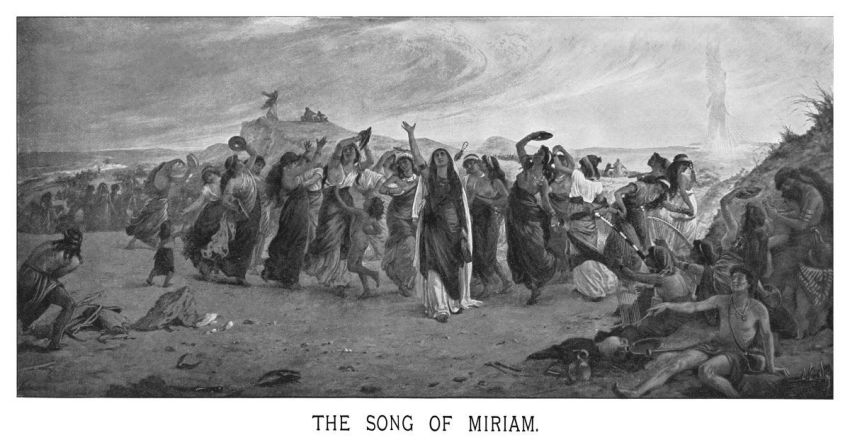Does the Bible teach male headship?

Many people claim that the Bible teaches “male headship” because 1 Corinthians 11:3 states, “man is the head of woman.” In English, head often implies authority over, so it’s understandable why English readers might think “man is the head of woman” means “man is the authority over woman.” But is this the way Greek readers understood it? To find the answer, let’s examine this verse in the context of how it was interpreted by church fathers, the secular use of the Greek word kephalē (head), and how the 180 instances of the Hebrew word for head meaning leader were translated in the standard Greek Old Testament (LXX).
“Source” fits the context of 1 Corinthians 11:3 best
My previous Christian Post article notes that the only reference to authority in 1 Corinthians 11:2–16 states, “Woman ought to have authority over her head.” If Paul intended this passage to teach that man has authority over woman, why does its only reference to authority affirm woman’s authority? That article also noted the many references to man as the source of woman in 1 Corinthians 11:8 and 12. This perfectly fits the interpretation of head as source. It also notes that Paul emphasizes in verse 11, “However, the important point is that woman is not separate from man, nor is man separate from woman in the Lord.” This clearly opposes interpreting man as the authority over woman. Similarly, 11:12 “For as woman came from man, so also man is born of woman” supports a focus on source and shows that just as man is the source of woman, woman is the source of man. Therefore, both man and woman should respect the other as their source. 1 Corinthians 8:6 affirms the other two source relations in 11:3, “there is one God … from whom are all things … and one Lord Jesus Christ through whom are all things …”
Church fathers explained instances of “head” in 1 Corinthians 11:3 as “source”
Many church fathers, including Theodore of Mopsuestia (PG 66.888C), Cosmas Indicopleustes (PG 88:224A), Eusebius, Eccl. Theol. 1.11.2–3, Ambrosiaster (CSEL 81.120–21) and Photius (see G. Hull, Equal to Serve, 278–79) explain that each instance of “head” in 1 Corinthians 11:3 means “source.” Cyril of Alexandria (died AD 444) de recta fide ad Arcadiam et Marinam 1.1.5.5(2).63 writes:
“Luke [3:28, ‘Adam from God’] ... explains the source of man, the Creator God. Thus we say that ‘the head (kephalē) of every man is Christ,’ for man was made through him and brought into existence... ‘And the head (kephalē) of woman is the man,’ because she was taken out of his flesh and so indeed has him as her source. Similarly, ‘the head (kephalē) of Christ is God,’ because He is from Him according to nature: for the Word was begotten out of God the Father.”
Cyril of Alexandria (de recta fide ad Pulcheriam et Eudociam 52.131D) confirms this:
“Of our race he became the first head (kephalē), which is source (archē), ... Christ ... has been appointed head (kephalē), which is source (archē), of those who through him are being formed anew ... he himself our source (archē), which is head (kephalē) ... For the Word, by nature God, was begotten from Him. Because the head (hē kephalē) means the source (tēn archēn) ... the man is said to be the head (kephalē) of woman, for she was taken out of him.”
Athanasius (circa 296–373) quoting the Arian Symb. Sirm. 1 anath. 26 (PG 26:740B) writes:
“For the head (kephalē), which is the source (archē) of all things, is the Son; and the head (kephalē), which is the source (archē) of Christ is God; for thus we reverently lift up all things to the One without beginning, the source (archē) of everything that exists through the Son.”
Secular Greek dictionaries affirm kephalē meaning source, but not authority in Paul’s day
Kephalē meaning source is commonly listed in Greek dictionaries since Zonaras’s 12th-century dictionary. Authority, however, was not an established meaning of kephalē in Greek. The most exhaustive Greek dictionary (LSJ) lists 49 figurative meanings for kephalē. None of them convey authority. Most dictionaries of ancient secular Greek don’t cite any example of kephalē meaning authority, including Moulton and Milligan, Friedrich Preisigke, Pierre Chantraine, S. C. Woodhouse, the LSJ supplements by Barber, Renehan, and Glare and the thirteen additional dictionaries Richard S. Cervin cites in, “Does Kephalē mean ‘Source’ or ‘Authority Over’ in Greek Literature? A Rebuttal,” Trinity Journal 10 NS (1989): 86–87. The earliest citation meaning authority I have seen in any secular Greek dictionary is from the fourth century AD. Greek dictionaries identify head meaning authority as Byzantine (LSJ8) or medieval (Dhimitrakou), long after Paul wrote. So it’s unlikely that Paul intended head to convey authority.
How does the Greek Old Testament translate the Hebrew word for head when it means Leader?
The LXX Greek translation of the Hebrew Scriptures widely used in Paul’s day confirms that authority was not an established meaning of kephalē. It almost always translates Hebrew references to a physical head kephalē but almost never when head means leader.
It uses kephalē clearly as a metaphor meaning “leader” to translate only one of the 180 cases where the Hebrew word for head means “leader.” English Bibles translate most of them “head,” e.g. NASB 116 times and ASV 115 times, because leader is an established meaning of head in English. All other alleged cases of head meaning “leader” were added by Origen in the 3rd century, are explained in context to mean something other than “leader,” or are translated “as head” (eis kephalēn), which Greek readers could understand to mean “like a head” rather than “is head.” The addition of “as ruler over them” following “as head” in Judges 11:11 provides a meaning for “as head” that otherwise would not have been obvious to Greek readers.
None of Paul’s twelve head metaphors requires the meaning authority. Ten convey source: 1 Corinthians 11:3ab (this parallels Ephesians 5:23) c, 4b, 5b.
Colossians 2:19; Ephesians 4:15–16: “the head, from whom the whole body … grows.”
Colossians 1:18, “He is the head of the body, the church, who is the source,” is explained in 1:16–17, 20, 22.
Two, apex: Ephesians 1:20–22; Colossians 2:10.
Furthermore, the exclusion of women from church leadership is incompatible with the Bible’s many affirmations of women leaders. Seven of the 10 people Paul names as colleagues in ministry in Romans 16 are women, including Phoebe, “deacon of the church of Cenchreae” and “leader (“stand in rank before”) of many, including myself” and Junia, who, like her husband, was “outstanding among the apostles” as demonstrated by Eldon Epp, Junia and Richard Bauckham, Gospel Women.
In summary: the context of 1 Corinthians 11:3, secular Greek dictionaries, the Greek Bible’s avoidance of “head” meaning authority, Paul’s usage, and Paul’s affirmations of women in church leadership show that Paul did not intend “head” to mean “authority” in 1 Corinthians 11:3. Nowhere does the Bible teaches male headship or even use the word headship.
Philip B. Payne (Ph.D. The University of Cambridge) has taught New Testament in colleges of the University of Cambridge and has been a Visiting Professor of New Testament at Trinity Evangelical Theological Seminary, Gordon-Conwell Theological Seminary, Bethel Seminary, and Fuller Theological Seminary. He is well known for seminal articles on the parables of Jesus, women in the teachings of Paul, textual criticism, and Codex Vaticanus. His books include Man and Woman, One in Christ: An Exegetical and Theological Study of Paul’s Letters, Why Can’t Women Do That? Breaking Down the Reasons Churches Put Men in Charge, and (forthcoming April 4, 2023) The Bible vs. Biblical Womanhood: How God’s Word Consistently Affirms Gender Equality. He founded Linguist’s Software, which provides fonts and input systems for over 2600 languages, including the fonts used to publish the Nestle-Aland Novum Testamentum Graece 28th edition, the UBS The Greek New Testament, and HALOT (The Hebrew and Aramaic Lexicon of the Old Testament). He and his wife Nancy were missionaries in Japan. Their three children and six grandchildren all love the Lord.



























